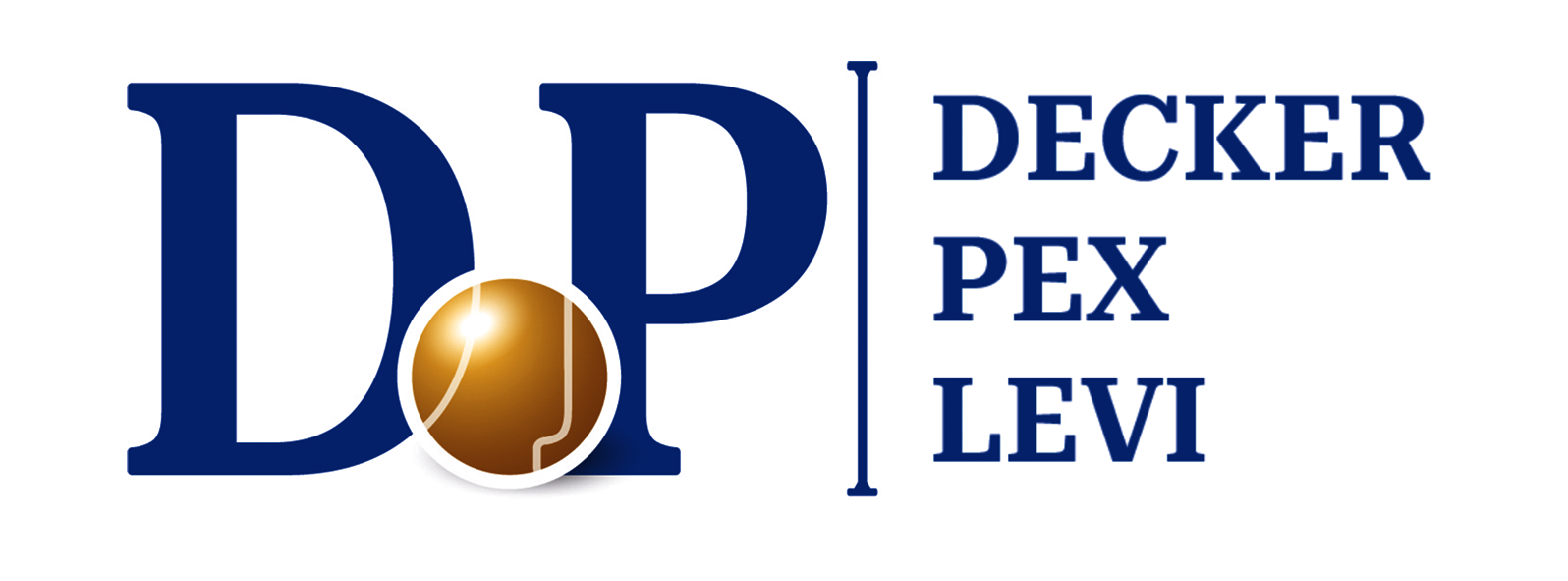A trademark coexistence agreement could serve as a great alternative for legal disputes with respect to trademark infringement and confusing similarity. What are those agreements and what they should include? Could the court force them? What antitrust issues they might raise? In this article, a trademark expert from our firm will answer these and other important questions on the topic.
The law firm of Decker, Pex, Levi specializes in trademark law and intellectual property (IP). The firm represents Israeli and international clients in IP legal proceedings and assists them with handling their trademark protection in Israel and worldwide, portfolio management, etc.
Trademark Coexistence Agreement – The Unknown Alternative for Legal Trademark Disputes
 In many cases of confusing similarity between marks, legal actions under the trademark law may be taken. Such actions could include filing a lawsuit against trademark infringement, or an opposition against trademark registration of a deceptive mark. But are there any other available solutions in such cases? What can 2 or more parties do when they use similar marks and prefer to reach a compromise, in which they can both continue to use them?
In many cases of confusing similarity between marks, legal actions under the trademark law may be taken. Such actions could include filing a lawsuit against trademark infringement, or an opposition against trademark registration of a deceptive mark. But are there any other available solutions in such cases? What can 2 or more parties do when they use similar marks and prefer to reach a compromise, in which they can both continue to use them?
A good solution in such cases might be reaching a trademark coexistence agreement. Such agreements are not as known as other legal instruments. Thus, they are not as common as taking legal actions in cases of an infringement or confusing similarity. Yet, they can help solve many disputes between business competitors in a much more efficient and economical way. Below we will explain in detail about trademark coexistence agreements, and elaborate on what a good agreement should include.
What is a Trademark Coexistence Agreement?
A trademark coexistence agreement is an agreement between 2 or more parties, which enables the use of similar marks owned by them. The parties usually commit not to initiate legal actions against each other, given that the use of the marks will be under the agreement’s terms. The specific terms of the agreement vary in different cases. They can include limitations regarding the territory in which the trademarks will be in use, the scope of the use, the classification of goods, etc.
What are the Alternatives for a Trademark Coexistence Agreement?
As we stressed above, trademark coexistence agreements are not as common as other forms of legal instruments in trademark disputes. Such disputes can take place on different situations. In cases of filing a trademark application for a mark which is confusingly similar to another trademark, the default solution is to file an opposition for registration.
Opposition proceedings in Israel are quite similar to civil lawsuit proceedings. They also include filing of pleadings and evidence, as well as investigations of declarants. The proceedings are held before the Israeli Trademark Registrar. The registrar’s decision in the case may be appealed to the court. Such proceedings are often necessary, despite the fact that they are usually lengthy and costly. However, if the parties could reach a compromise, a trademark coexistence agreement might be a more efficient way to settle the case.
In a situation where a party uses a mark which is confusingly similar to a registered trademark, the default would be to take legal actions against trademark infringement. Such actions usually begin with collecting evidence regarding the infringement, and then sending a cease and desist letter to the infringer. If the infringement continues after those initiative steps, the default solution would be to file a lawsuit. Yet, here again, if it is possible for the parties to negotiate, coexistence agreement might solve the dispute more quickly and efficiently.
In Which Cases Could Trademark Coexistence Agreement Be Relevant?
 As mentioned, coexistence agreements can serve as an alternative for opposition proceedings. According to the Israeli Trademark Ordinance, anyone can file an opposition for trademark registration. In many cases, the opposing party would be a competitor of the applicant.
As mentioned, coexistence agreements can serve as an alternative for opposition proceedings. According to the Israeli Trademark Ordinance, anyone can file an opposition for trademark registration. In many cases, the opposing party would be a competitor of the applicant.
For instance, an international company learns that an Israeli competitor applied for trademark registration, and the mark is similar to its international brand. Although the international company doesn’t operate in Israel, it wishes to ensure that the Israeli brand will not be able to compete with her in the territories where it does operate.
Instead of having lengthy opposition proceedings, sometimes the companies can reach a settlement, which will include a coexistence agreement. In the agreement, the Israeli company may commit to use the trademark only within the Israeli territory. Otherwise, it may commit to use it in a distinctive manner. For instance, if the international company’s trademark is the word “Global international”, the Israeli brand could be “Global Israel”, or another distinctive name.
Rival Applications of Identical Marks
 Another case where coexistence agreements could be very useful is a dispute between different competitors that apply for trademark registration around the same time. In such cases, the Israeli Trademark Office would usually notify the applicants about the other applications, and initiate interference proceedings. Each party will have to prove that its marks are qualified for registration.
Another case where coexistence agreements could be very useful is a dispute between different competitors that apply for trademark registration around the same time. In such cases, the Israeli Trademark Office would usually notify the applicants about the other applications, and initiate interference proceedings. Each party will have to prove that its marks are qualified for registration.
Again, instead of leaving it for the Trademark Registrar to decide which mark is qualified for registration, the parties can attempt to come to a settlement. They may reach a coexistence agreement, in which they would undertake using the mark in a distinctive manner, which would prevent confusion among consumers.
In addition (or instead), they could include an obligation that each mark would be registered for different classes. Israel, like most of the world, works with the global trademark classification of commodities (known as “Nice Classification”, set by numbers between 1 to 45.
According to the classification, registration of chocolate brands will usually be under class 30. Registration of a clothing brand will usually be under class 25. Accordingly, the protection of the trademark is generally limited to the particular class. Different classification might result in the marks being recognized as having distinctive characters, and thus qualified for registration.
Could the Registrar or Court Force Trademark Coexistence Agreements?
Usually, trademark coexistence agreements are reached between parties that are willing to enable each other the use of each party’s trademark. What happens when one party refuses to settle and allow another party to register a similar trademark? Can the Trademark Registrar or the Court intervene and decide on the terms under which the parties could use the marks?
Although such cases are not very common, it is possible that the legal authority would decide on the terms of use of similar marks. Such legal decisions are arguably a form or forcing a coexistence agreement. There is an important recent decision of the Supreme Court in this topic.
Habitat Case
 This ruling was the result of a long dispute between the veteran international furniture chain “Habitat” and an Israeli chain of furniture stores with the same name. The international chain had registered trademarks in Israeli until the 1970’s. However, it did not operate in Israel back then. Eventually, its trademarks were removed from the registry. In the same decade, the Israeli chain began operating in Israel.
This ruling was the result of a long dispute between the veteran international furniture chain “Habitat” and an Israeli chain of furniture stores with the same name. The international chain had registered trademarks in Israeli until the 1970’s. However, it did not operate in Israel back then. Eventually, its trademarks were removed from the registry. In the same decade, the Israeli chain began operating in Israel.
When the international chain decided to enter the Israeli market, the Israeli Habitat chain attempted to block it from doing so. The owner of the Israeli chain filed a lawsuit to the Tel Aviv district court, claiming injunctive relief which would prevent the chain from using the mark in Israel. However, the court ruled against the Israeli chain, and held that its trademarks were registered in bad faith (since it knew about the international brand). Thus, the court held that the trademarks should be removed from the registry.
The Israeli chain appealed to the Supreme Court. The court first ordered the parties to try reaching an agreement, in which the 2 marks would be in use in Israel in a distinctive manner. After a failure to reach such an agreement, the court found its own solution: the Israeli company will be able to use the mark “Habitat”, and the international company will be able to use the mark “Habitat International”.
Antitrust Issues
 Although it is not common in Israel, trademark coexistence agreement might raise Antitrust law issues. The Israeli Competition Law is the main legislation regarding Antitrust Law in Israel. According to the law, an agreement between competing parties, in which one of the parties limits itself in a way that prevents or reduces competition in Israel, might be seen as a binding arrangement. Binding arrangements require an exemption from the Israeli Competition Authority in order to exist.
Although it is not common in Israel, trademark coexistence agreement might raise Antitrust law issues. The Israeli Competition Law is the main legislation regarding Antitrust Law in Israel. According to the law, an agreement between competing parties, in which one of the parties limits itself in a way that prevents or reduces competition in Israel, might be seen as a binding arrangement. Binding arrangements require an exemption from the Israeli Competition Authority in order to exist.
These above limitations may include issues such as the market division, the gained revenues, the price of the goods or services, etc. Avoidance from following the Israeli antitrust regulation may result in high fines and even criminal charges. Thus, it is important to analyze in advance how the coexistence agreement may affect the competition in the Israeli market. An experienced Israeli trademark lawyer may help you to operate in accordance with the Israeli antitrust regulation and with the protocols of the Israeli Competition Authority.
Contact Us
In conclusion, trademark coexistence agreement can be an efficient way to solve different trademark disputes. It should, however, be made in accordance with the different laws and regulation, considering both antitrust and IP issues. For more questions and information about trademark law in Israel, you can contact us and an expert attorney from our firm would be glad to assist you. Our firm, Decker, Pex, Levi, specializes in trademark law and intellectual property matters in Israel and abroad.
